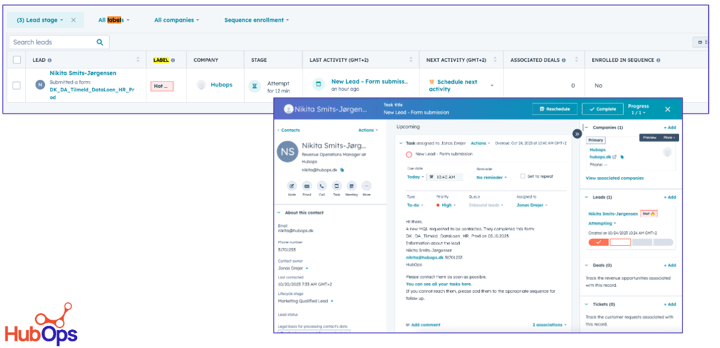Sales and Marketing Alignment: Reports that help you have a conversation and avoid the blame game
My week started off with a challening message: "We're not sure how to leverage your time because we need to work on Sales and Marketing alignment." It's a tale as old as digital marketing and at the same it's still a challenge for many commercial teams. If this applies to your organisation, how do you go about it?
Are you stuck in a blame game? Are you struggling to prioritise projects that directly impact your bottom line, even if there is a lot of work involved that might only show a return in the long run? Here are a few ideas on reports to build and review with your colleagues across commercial teams on a regular basis.
Understanding Lead Drop-off Patterns
One of the critical aspects of aligning sales and marketing is understanding the journey of leads through the sales funnel. I love leveraging HubSpot's Journey report builder for this purpose.j It provides comprehensive insights into the stages where leads tend to drop off. By analyzing this data, teams can identify specific stages that require attention and improvement. This report outlines the origin of leads and highlights patterns over time, enabling both sales and marketing teams to tailor their strategies to effectively address these drop-offs. By understanding these patterns, organizations can implement targeted interventions to minimize lead attrition and enhance conversion rates.
You can customise the steps to be as granular as you'd like. In this example there are a few questions on which form submissions should be routed to Sales and we want to see how they find their way to 'closed won' even if they don't fit into our current process.

Monitoring Lead Progression and Closure
An all time classic goes something like this: "Sales doesn't follow up with my leads." The response then goes like this: "Yeah but the quality I get from marketing is so low". If that's the case, we need to track this to understand which campaigns deliver what kind of quality leads.
Making sure the sales pipeline truly reflects the current state of leads is super important for making smart decisions. One helpful report to go over with both Sales and Marketing is the one that looks at when leads were created and where they are now. It's really important for teams to close out all leads properly so that the system matches the real pipeline. This not only keeps the database neat and tidy but also helps with accurate forecasting and performance checks. By regularly reviewing this report, teams can spot any issues and fix them, making sure all leads are in the right place and managed well.

Evaluating Conversion Points
The final report to review together looks at the last conversion event before a prospect becomes a lead. This report is particularly significant for marketing teams, as it directly impacts their strategies and initiatives. By understanding the conversion points that precede lead generation, marketing teams can identify successful tactics and optimize their campaigns for greater effectiveness. Collaboratively reviewing this report allows sales and marketing teams to align their efforts, ensuring that strategies are consistently fine-tuned to drive optimal results.
It's important to remember that this report isn't just about the numbers but it should facilitate a conversation about quality and the conversations the Sales team is having with these prospects. It's a great opportunity for Sales to request specific content backed up by CRM data. It's a great opportunity for Marketing to brief Sales on upcoming campaigns so you can, together, develop talking points.
Agenda for Data-Driven Sales and Marketing Alignment Meeting
What would a Sales and Marketing alignment meeting look like? Feel free to steal and adjust this agenda example:
Date: [Insert Date]
Time: [Insert Time]
Location: [Insert Location]
-
Welcome and Objectives (5 minutes)
- Opening remarks by [Meeting Leader]
- Opening remarks by [Meeting Leader]
-
Performance Overview & Anecdotes (25 minutes)
- Presentation of key sales and marketing metrics
- Discussion of recent trends and insights
- Sharing real-world examples and success stories from both teams
- Identifying challenges and areas for improvement
-
Data-Driven Alignment Strategies (15 minutes)
- Aligning sales and marketing goals based on data
- Leveraging analytics for better decision-making
- Identifying opportunities to collaborate more effectively
-
Reporting and Tools Discussion (10 minutes)
- Review of key reporting tools and platforms
- Discussion on improving data sharing and communication
-
Q&A and Next Steps (5 minutes)
- Address any final questions or concerns
- Summarize key takeaways and next steps
As with most things, we get better when we have a conversation with our colleagues. The same goes for funnel optimisation between Marketing and Sales. By utilizing targeted reports that shed light on lead behaviours, pipeline accuracy, and conversion points, teams can make informed decisions and implement strategies that drive growth. Embracing data-driven insights not only enhances collaboration but also empowers organizations to achieve their sales and marketing objectives with precision and efficiency. By systematically analyzing and acting upon the insights provided by these reports, businesses can pave the way for sustained success and a competitive edge in the market.





